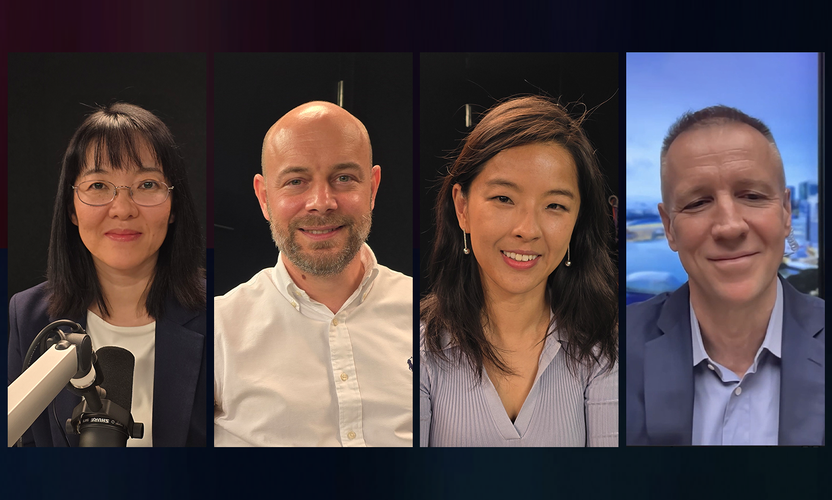This content was correct at the time of publication and is no longer being updated.
China’s credit markets have come down with a case of the jitters. Investors’ concerns have risen since late March, when troubles emerged at the systemically important bad-debt manager Huarong Asset Management Co. and proceeded to weigh on sentiment towards other large state-owned enterprises (SOEs).
We think some of these concerns are overdone, and some perspective is needed. While the situation at Huarong is still developing, we see no indication authorities are about to let it fail - a disorderly resolution would serve no one’s interests. Instead, we think this and other cases where we’ve seen greater credit stress in China in the past 6-12 months tell quite a different story: these are the hallmarks of a maturing market. Ultimately these developments will enable investors to better price risk and avoid moral hazard across both private and state-owned companies.
The big picture
China is in a period of slowing credit growth, as the government is deliberately but gradually looking to reduce overall leverage in the economy after several years of debt-fuelled expansion. Despite this, healthy exports are supporting growth at domestic producers, while China’s inflation narrative is strong: commodity prices are up, and capital expenditure is rising at the fastest rate in a decade.
Against a backdrop of more moderate economic growth, reining in leverage requires a bit of a balancing act. Here, defaults serve as a useful barometer - especially when they take place among SOEs. While we expect defaults to continue in China, and their pace will almost certainly be kept at a manageable level, the trend does underscore the importance of good credit selection.
A key case
For Huarong in particular, the recent trouble began at the end of March when the company missed the deadline for its earnings release, prompting a steep selloff in its dollar bonds. Huarong had already been under scrutiny by investors - since 2018, the company has been in restructuring talks after a spate of failed investments, and its former chairman Lai Xiaomin was executed this January following a graft probe.
But the non-filing seemed to cause wider rifts in the system. Huarong was subsequently downgraded by Fitch and Moody’s, and there has been talk in the market of a potential default. Should that happen, we might expect a protracted recovery process, with potential bond exchanges like what we saw with HNA Group. However, we think such a resolution isn’t the most likely outcome, as our base scenario is that Huarong remains a systemically important company which the government is unlikely to let fail. In fact, most of our downside scenarios imply recovery levels close to where the bonds are trading today.
SOEs in focus
The number of first-time defaulters in China’s onshore market has decreased since the peak in 2018, when China ramped up its deleveraging campaign. But this is because many of the weaker privately-owned enterprises had been cleaned out from the market, while SOEs still account for a small number of defaulters overall.
However, Chinese SOEs’ credit risks have been in the spotlight due to their larger amount of bonds outstanding and their higher likelihood for contagion to risk sentiment. Other recent examples include the onshore defaults of Yongcheng Coal and Brilliance Auto in the last quarter of 2020. It’s often hard for investors to assess levels of government support between various SOEs, which form the bulk of China’s credit universe.
Credit market implications
Our Asian fixed income team examined the potential spillover effects around Huarong, and expect it won’t add much ratings downgrade risk for SOEs, as most global agencies had already reassessed their government support during previous rounds of defaults. Beyond reliance on implicit supports or the views of credit ratings agencies, it is important for investors in China’s SOE credit space to also adopt a consistent approach focused on fundamentals - and here our fixed income research team is able to leverage its strong presence in both onshore and offshore markets.
We think most of the credits within sectors like utilities, energy, metals & mining and big banks have good stand-alone fundamentals, strong market positions and high strategic importance for the government. The main risk to sentiment and funding access lies with the other three large domestic asset management companies, but the overall sector should remain supported by onshore banks and could offer buying opportunities if spreads widen.
A cross-asset class view
From an equities perspective, there should also be limited direct impact on the market as regulators understand the negative implication of restructuring a major state-owned non-bank financial firm and will tread carefully.
That said, there may be an indirect drag on the overall risk appetite of banks. Banks grew more conservative last year during the pandemic, for example by tightening on credit cards, but things are normalising this year as the pandemic eases. Although the Huarong issue is best regarded as an individual case rather than a systemic one, a knock-on effect may be that banks turn more cautious on exposure to SOEs with stretched and complicated balance sheets. Investors have been more worried about banks doing national service by bailing out the defaulters and granting more loans, but this concern is counterbalanced by better risk controls now.
We also expect overall liquidity to tighten, as China normalises monetary policy post-Covid and continues the deleveraging process. With total social finance growth slowing and credit impulse falling, the lending growth at most China banks should moderate from last year’s high base.
Takeaways for investors
We think defaults will continue to rise among China’s SOEs but policymakers will ensure they are kept at orderly levels. We expect such credit events will be dealt with on a case-by-case basis, meaning individual credit and stock selection is key for investors.
In the past, we’ve highlighted the risks when markets expect China’s regulators to bail out troubled firms. Policymakers are keeping this type of moral hazard squarely in their crosshairs. Rising defaults remain a contrarian bellwether of China’s maturing capital markets; for now and the foreseeable future, it’s no pain, no gain.










































